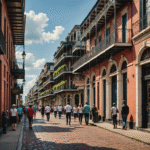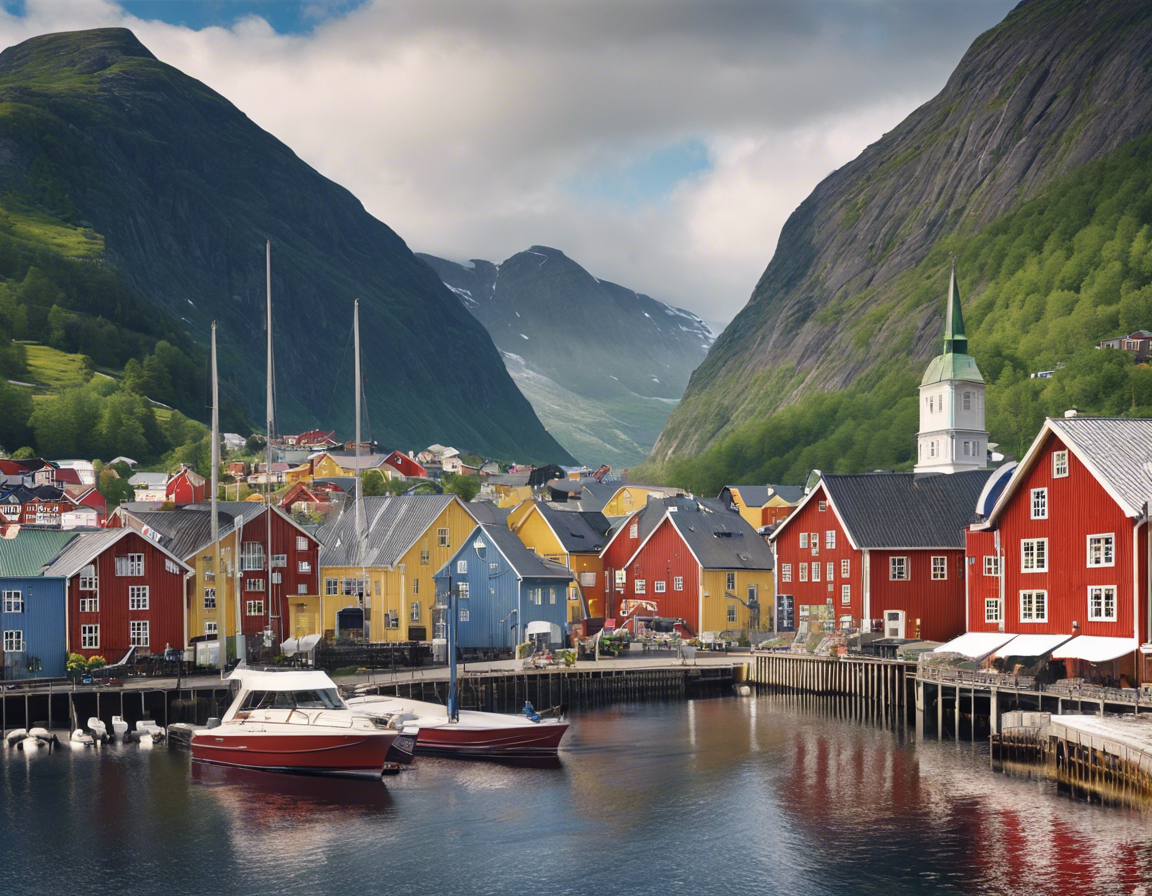
Cruising the Norwegian Fjords: An Epic Adventure for Couples and Families in 2024:
Embark on a mesmerising journey through the majestic Norwegian Fjords in 2024, where towering cliffs meet crystal-clear waters and the midnight sun casts a magical glow over the land of the Vikings. Whether you’re a couple seeking romance or a family craving adventure, Norway offers an unforgettable experience that will inspire you.
A Little History About Norway:
Norway has a rich history that dates back to the Viking Age, when fearless seafarers and skilled craftsmen roamed the seas and left their mark on the world. From the iconic Viking ships that now rest in Oslo’s museums to the rugged landscapes that inspired their sagas, Norway’s Viking heritage is woven into the fabric of the country’s culture and identity.
During the Viking Age, which lasted from the late 8th century to the mid-11th century, the Vikings were a major force in European history. They were skilled warriors, sailors, and traders, and they traveled far and wide, exploring new lands and establishing settlements.
The Vikings had a profound impact on the cultures of the countries they visited. They brought new technologies, such as the longship, and new ideas, such as the concept of a single god. They also left behind a rich legacy of art, literature, and mythology.
Norway’s rugged and fjord-filled landscape played a pivotal role in shaping Viking culture. With its extensive coastline and navigable waterways, Norway provided ideal conditions for maritime exploration and trade. The fjords, with their deep inlets, facilitated navigation and served as natural harbors for Viking longships.
The Viking Age in Norway came to an end in the mid-11th century due to a number of factors, including the Christianization of Norway, the rise of the Norwegian monarchy, and the increasing competition from other European powers.
Today, Norway’s Viking heritage continues to fascinate people from around the world. The country’s museums, such as the Viking Ship Museum in Oslo, showcase the impressive craftsmanship and ingenuity of the Vikings, while the rugged landscapes that inspired their sagas continue to draw visitors to Norway’s shores.
10 Best Things for Couples to Do in Norway:
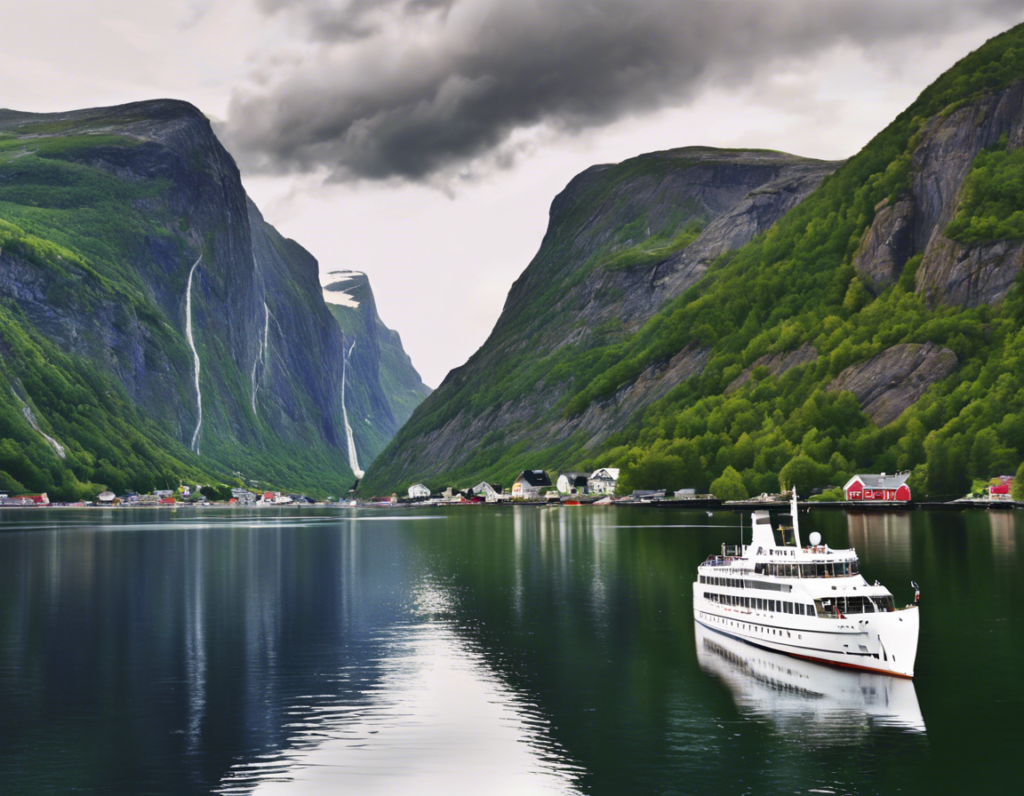
Norway, with its stunning landscapes, vibrant culture, and rich history, offers countless romantic experiences for couples. Whether you’re looking for adventure or relaxation, here are the ten best things to do in Norway that will surely create unforgettable memories.
1. Take a Romantic Fjord Cruise
Cruising through the breathtaking fjords is a quintessential Norwegian experience. A cruise from Bergen to Kirkenes allows couples to explore hidden gems accessible only by boat. As you glide past towering cliffs, cascading waterfalls, and charming coastal towns, you can enjoy a glass of wine while soaking in the stunning scenery. The serene beauty of the fjords provides a perfect backdrop for romance and connection.
2. Witness the Northern Lights
One of the most magical experiences in Norway is witnessing the Northern Lights. Head to Tromsø or the Lofoten Islands during winter, where the skies come alive with vibrant colors. Cuddle under a blanket, sip hot cocoa, and marvel at the celestial display. This natural phenomenon is not just a sight to behold but a moment to cherish together.
3. Hike in Jotunheimen National Park
For couples who love adventure, hiking in Jotunheimen National Park is a must. This area is known for its dramatic landscapes, including towering peaks and pristine lakes. Trails like Besseggen Ridge offer breathtaking views and a chance to connect with nature. Pack a picnic and enjoy lunch with a view that will leave you both speechless.
4. Explore the Charming Streets of Bergen
Bergen, often referred to as the “Gateway to the Fjords,” is a picturesque city filled with colorful wooden houses and vibrant culture. Stroll hand-in-hand through the historic Bryggen wharf, visit the fish market, and take the funicular to Mount Fløyen for panoramic views. The city’s charm and cozy cafes make it an ideal spot for couples to explore together.
5. Spend a Night in an Ice Hotel
For a truly unique experience, consider spending a night at the Sorrisniva Igloo Hotel in Alta. This ice hotel, built entirely of snow and ice, offers a cozy atmosphere with thermal sleeping bags to keep you warm. Enjoy a drink at the ice bar and take in the serene beauty of the Arctic wilderness. It’s a once-in-a-lifetime experience that adds a touch of adventure to your romantic getaway.
6. Enjoy a Scenic Drive on the Atlantic Ocean Road
The Atlantic Ocean Road is one of Norway’s most scenic drives, offering breathtaking views of the ocean and surrounding landscapes. This winding road connects a series of islands and islets, making for a picturesque journey. Stop at the various viewpoints, take photos, and enjoy a picnic by the sea. It’s a perfect way to spend a leisurely day with your partner.
7. Relax by Sognsvann Lake
Located just outside Oslo, Sognsvann Lake is a popular spot for couples looking to unwind. Surrounded by lush forests and walking paths, it’s ideal for a leisurely stroll or a romantic picnic by the water. In the summer, you can even take a dip in the lake. The tranquil setting provides a peaceful escape from the city.
8. Experience a Traditional Norwegian Sauna
Embrace the Nordic tradition of relaxation by visiting a sauna together. Many spas and wellness centers in Norway offer private sauna experiences, often with stunning views of the fjords or mountains. Afterward, take a refreshing dip in the cold water, followed by some quality time in the sauna. It’s a unique way to bond and rejuvenate together.
9. Visit the Vigeland Sculpture Park
Located in Oslo, the Vigeland Sculpture Park is a beautiful outdoor space filled with over 200 sculptures created by Gustav Vigeland. Stroll through the park hand-in-hand, admiring the art and enjoying the lush surroundings. The park is especially lovely during sunset, making it a romantic spot for couples to relax and connect.
10. Indulge in Fine Dining
Norway boasts a vibrant culinary scene, with many fine dining options perfect for a romantic evening. Restaurants like Maaemo in Oslo and Lysverket in Bergen offer exquisite tasting menus featuring local ingredients. Enjoy a memorable meal together, savoring the flavors of Norway while taking in stunning views of the surrounding landscapes.
These experiences highlight the beauty and romance that Norway has to offer couples. From breathtaking natural wonders to cozy city explorations, each activity provides an opportunity to deepen your connection and create lasting memories together.
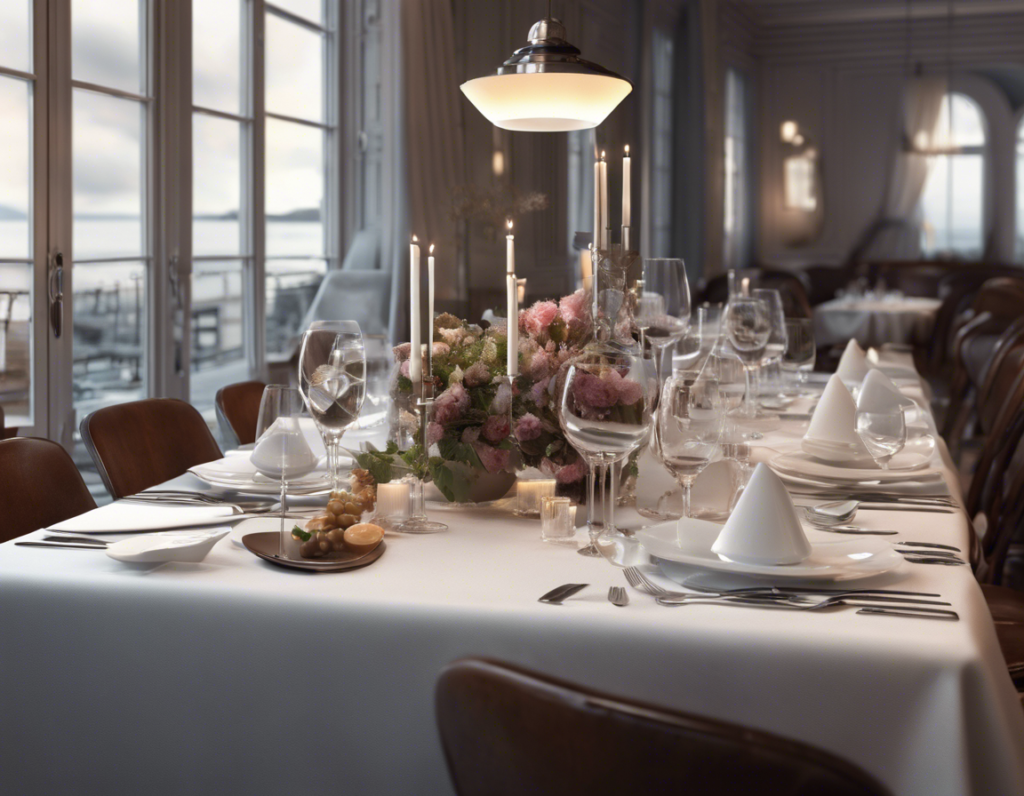
Trending Best Places to Visit in Norway:
Norway is a land of breathtaking natural beauty, from the majestic fjords of the west to the rugged tundra of the north. Here are some of the top trending destinations that should be on every traveler’s bucket list:
1. The Lofoten Islands
This stunning archipelago in northern Norway is known for its dramatic peaks, pristine beaches, and traditional fishing villages. Hike to the top of Reinebringen for panoramic views, spot sea eagles soaring overhead, and sample fresh seafood in the charming town of Svolvær.
2. Geirangerfjord
A UNESCO World Heritage Site, Geirangerfjord is one of Norway’s most famous fjords. Cruise past towering waterfalls like the Seven Sisters and the Suitor, and explore abandoned farms clinging to the mountainsides. The nearby Trollstigen road is a thrilling drive with 11 hairpin turns and breathtaking views.
3. Tromsø
Known as the “Paris of the North,” Tromsø is a vibrant city with a lively cultural scene and easy access to the surrounding wilderness. Chase the Northern Lights in winter, go dog sledding, and visit the Arctic Cathedral with its distinctive architecture.
4. Ålesund
This charming Art Nouveau town rises from the sea like a fairy tale, with its colorful buildings and winding streets. Climb the 418 steps to the top of Mount Aksla for panoramic views, and explore the Atlantic Sea Park, one of the largest saltwater aquariums in Northern Europe.
5. Svalbard
This remote Norwegian archipelago located halfway between Norway and the North Pole is a land of polar bears, glaciers, and the midnight sun. Take a guided tour to spot Arctic wildlife, explore the historic mining town of Longyearbyen, and marvel at the Northern Lights in winter.
These destinations showcase the incredible diversity of Norway’s landscapes and offer endless opportunities for adventure, relaxation, and cultural immersion. Whether you’re hiking through the fjords, chasing the Northern Lights, or exploring vibrant cities, Norway is sure to leave a lasting impression.
Top Restaurants and Cuisine in Norway:
Norway’s culinary scene is a delightful fusion of traditional and modern influences, showcasing the country’s rich natural resources and innovative chefs. From Michelin-starred fine dining to cozy local eateries, here are some of the top restaurants and culinary experiences that highlight the best of Norwegian cuisine.
1. Maaemo (Oslo)
Maaemo is a renowned fine dining restaurant in Oslo, celebrated for its seasonal Norwegian menu crafted from locally sourced ingredients. With three Michelin stars, it offers a unique culinary experience that emphasizes foraged and biodynamic produce. The minimalist setting allows the food to take center stage, and reservations are highly sought after, often requiring booking months in advance.
2. Re-Naa (Stavanger)
Located in Stavanger, Re-Naa is another Michelin-starred gem, boasting two stars. The restaurant is known for its innovative dishes inspired by the local landscape. The menu evolves with the seasons, showcasing the best of Norwegian ingredients and culinary techniques. The warm and inviting atmosphere makes it a perfect spot for a romantic dinner.
3. Under (Lindesnes)
Under is the world’s largest underwater restaurant, located five and a half meters below sea level. This unique dining experience allows guests to enjoy stunning views of marine life while savoring a menu that highlights the best of Southern Norway’s seafood. With a Michelin star, Under is a must-visit for those looking for a memorable culinary adventure.
4. Cornelius Seafood Restaurant (Bergen)
Situated on Holmen Island, just a short boat ride from Bergen, Cornelius is famous for its “Meteorological menu,” which changes daily based on the weather and the catch of the day. This seafood restaurant offers an authentic taste of the fjords, with dishes that highlight the freshness and quality of local ingredients. The scenic views enhance the dining experience, making it a favorite among visitors.
5. Statholdergaarden (Oslo)
This Michelin-starred restaurant is housed in a historic building dating back to the 17th century. Statholdergaarden offers a menu that combines traditional Norwegian flavors with modern techniques. The elegant setting and attentive service make it an ideal choice for special occasions, providing a taste of Norway’s culinary heritage.
6. Restaurant Kontrast (Oslo)
With a focus on sustainability and seasonal ingredients, Restaurant Kontrast offers a unique dining experience in Oslo. The menu features innovative dishes that showcase the best of Norwegian produce, paired with carefully selected wines. The contemporary setting and commitment to quality make it a popular choice among locals and tourists alike.
7. Ekebergrestauranten (Oslo)
Perched on a hillside overlooking Oslo, Ekebergrestauranten offers eclectic European cuisine in a stunning setting. The restaurant features chic dining rooms and terraces, providing breathtaking views of the city and fjord. It’s a perfect spot for a romantic dinner or a leisurely lunch, with a menu that highlights seasonal ingredients.
8. MOON (Bergen)
MOON is a trendy restaurant in Bergen known for its innovative approach to traditional Norwegian dishes. The menu features a variety of seafood and local ingredients, all prepared with a modern twist. The lively atmosphere and creative cocktails make it a great place for couples looking to enjoy a fun night out.
9. Hos Thea (Oslo)
This cozy neighborhood eatery in Oslo is known for its relaxed atmosphere and delicious food. Chef Sergio’s menu focuses on traditional ingredients and French-inspired sauces, providing a comforting dining experience. It’s a great spot for couples looking for a casual yet memorable meal.
10. Den Glade Gris (Oslo)
For a more laid-back dining experience, Den Glade Gris specializes in hearty pork dishes and a selection of local beers. The rustic setting and friendly service create a welcoming atmosphere, making it a popular choice for both locals and visitors. It’s an excellent place to enjoy a casual meal without sacrificing quality.
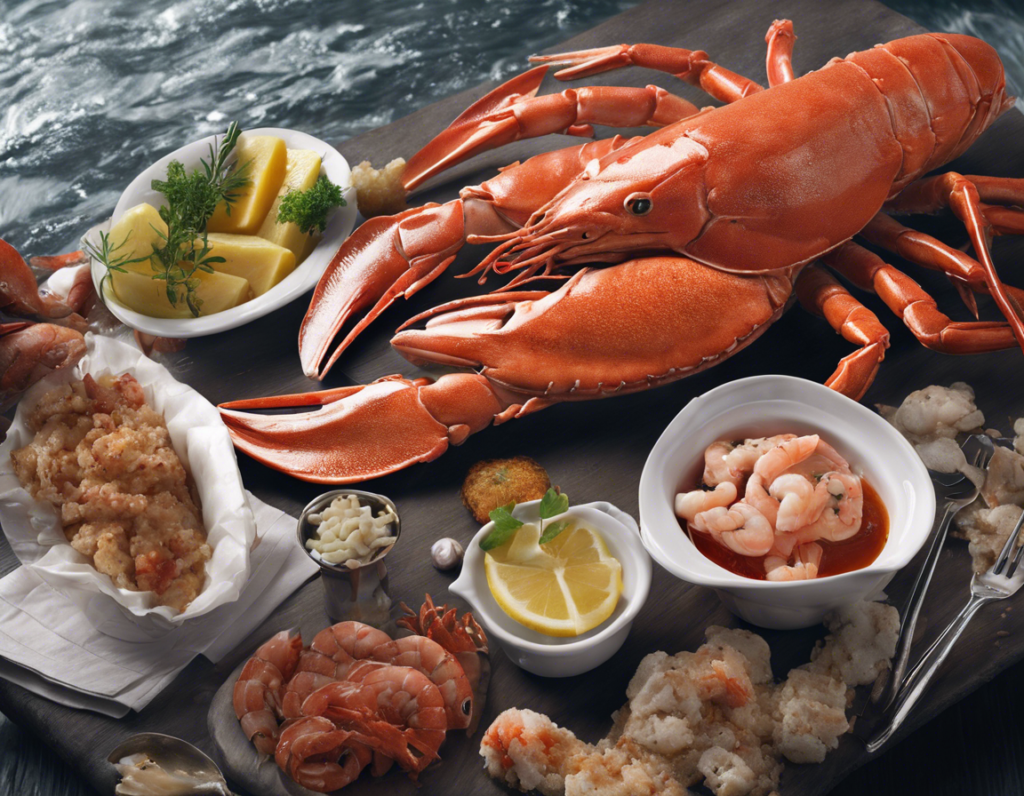
Norwegian Cuisine Highlights
Norwegian cuisine is characterized by its emphasis on fresh, high-quality ingredients, particularly seafood, game, and locally sourced produce. Here are some traditional dishes to try during your culinary journey in Norway:
Rakfisk: Fermented fish, typically trout, served with flatbread and sour cream.
Fårikål: A hearty lamb and cabbage stew, considered Norway’s national dish.
Kjøttkaker: Norwegian meatballs served with potatoes, gravy, and lingonberry sauce.
Lapskaus: A traditional stew made with meat and root vegetables.
Klippfisk: Dried and salted cod, often used in various traditional dishes.
Norway’s culinary landscape is diverse and evolving, with a strong emphasis on sustainability and local sourcing. Whether dining at a Michelin-starred restaurant or enjoying a casual meal at a local eatery, the flavors of Norway are sure to leave a lasting impression.
15 Best Things for Families to Do in Norway :
Explore the Viking Ship Museum in Oslo, where you can see the well-preserved remains of ancient Viking ships and learn about their seafaring culture.
Visit the Kon-Tiki Museum, where you can learn about Thor Heyerdahl’s famous expeditions and see the original Kon-Tiki raft.
Take a family-friendly hike to the top of Mount Floyen in Bergen, where you can enjoy panoramic views of the city and the surrounding fjords.
Ride the Flåm Railway and explore the charming village of Flåm, where you can visit a Viking farm and learn about traditional crafts.
Go on a whale watching tour in Andfjorden, where you can spot majestic humpback whales and orcas in their natural habitat.
Visit the Holmenkollen Ski Museum and Jump Tower in Oslo, where you can learn about the history of skiing and even try your hand at ski jumping.
Explore the Vigeland Sculpture Park in Oslo, where you can admire the work of Gustav Vigeland and enjoy a picnic in the beautiful gardens.
Take a family-friendly cruise through the Geirangerfjord, where you can spot waterfalls, wildlife, and traditional Norwegian farms.
Visit the Polaria aquarium in Tromsø, where you can see seals, fish, and other marine life up close.
Go on a dog sledding adventure in Tromsø, where you can learn about the history of dog sledding and enjoy the thrill of racing through the snow.
Visit the Lofoten Islands, where you can explore the charming fishing villages, spot sea eagles, and enjoy the stunning natural beauty of the archipelago.
Go on a fjord safari in Ålesund, where you can explore the narrow fjords and spot wildlife such as seals, otters, and birds.
Visit the Norsk Folkemuseum in Oslo, where you can learn about traditional Norwegian culture and see historic buildings from across the country.
Take a family-friendly hike to the top of Pulpit Rock (Preikestolen) in Lysefjord, where you can enjoy stunning views of the fjord and the surrounding mountains.
Visit the Svalbard Global Seed Vault in Svalbard, where you can learn about the importance of preserving plant biodiversity and even plant your own seed.
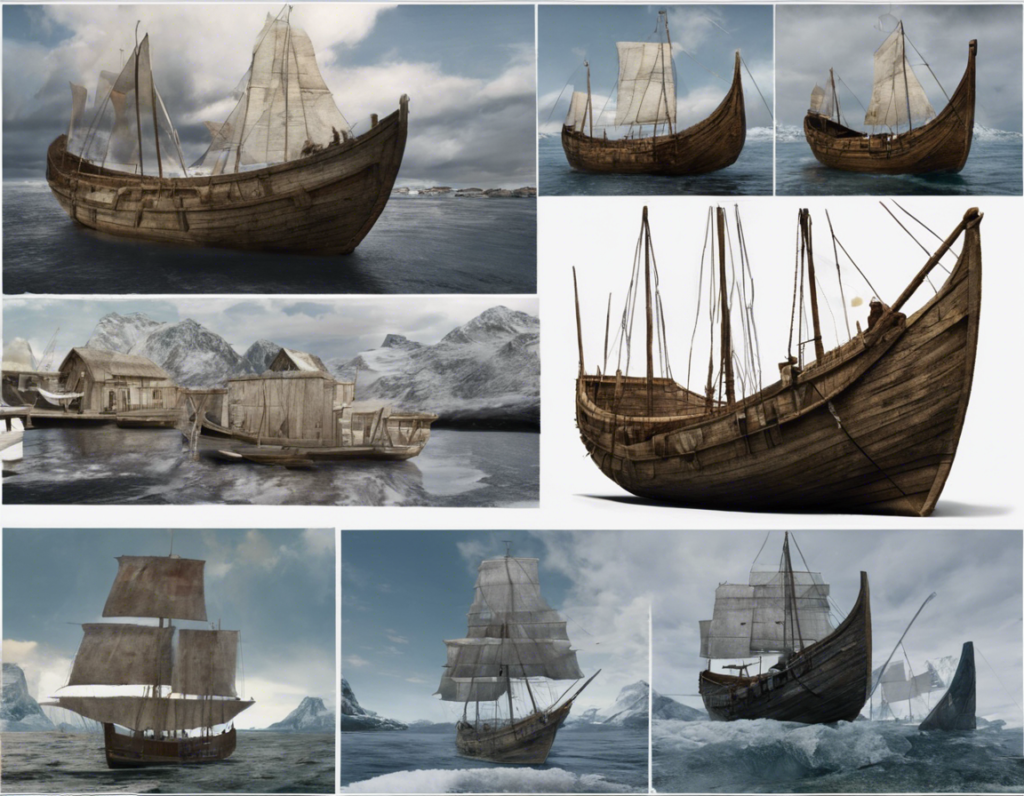
Transportation in Norway:
Norway has an extensive and efficient transportation network that connects its major cities and scenic destinations. Whether you prefer trains, buses, ferries, or cars, there are plenty of options to explore the country’s stunning landscapes.
Trains
Norway’s train network, operated by Vy (formerly NSB), links major cities like Oslo, Bergen, Trondheim, and Bodø. The trains are comfortable, with spacious carriages and plenty of room for luggage. Some routes, like the famous Flåm Railway, offer breathtaking views of the fjords and mountains.
Tickets can be expensive, but booking in advance can get you discounted “minipris” fares. You can buy tickets online, through the Vy app, or from ticket machines at stations.
Buses
Buses are a cheaper alternative to trains and are essential for visiting rural areas. Long-distance routes are operated by Vy and private companies like Nor-Way Bussekspress and Lavprisekspressen.
Some bus routes involve ferry crossings, so you may need to switch buses on the other side. Services are less frequent on weekends and during the low season.
Ferries
Ferries are a scenic and essential way to travel in Norway, especially for crossing fjords. They carry cars, foot passengers, and cyclists, with fares paid to the attendant on board. Services are more frequent in summer, but there can be long queues to board.
The famous Hurtigruten coastal ferry runs from Bergen to Kirkenes, calling at 34 ports. It’s primarily a cruise package, but you can book individual legs.
Cars
Renting a car gives you flexibility to explore Norway at your own pace. The main roads are excellent, but driving can be challenging on narrow mountain roads, especially in winter. Make sure to pack provisions, hiking gear, and a spare tire if venturing off the beaten path.
Domestic Flights
For long distances, flying is often faster and sometimes cheaper than taking the train. Norwegian Airlines and Danish Air Transport operate domestic routes, with prices as low as 600 NOK from Oslo to Alta.
Public Transportation in Cities
Local transport in Norway’s cities is managed by the municipality and usually includes buses, metro, trams, and ferries. Oslo’s system, called Ruter, is a great way to see the city’s sights.
In summary, Norway’s transportation network offers a variety of options to suit different travel styles and budgets. Whether you choose trains, buses, ferries, or a combination, you’ll be able to explore the country’s stunning landscapes in comfort and style.
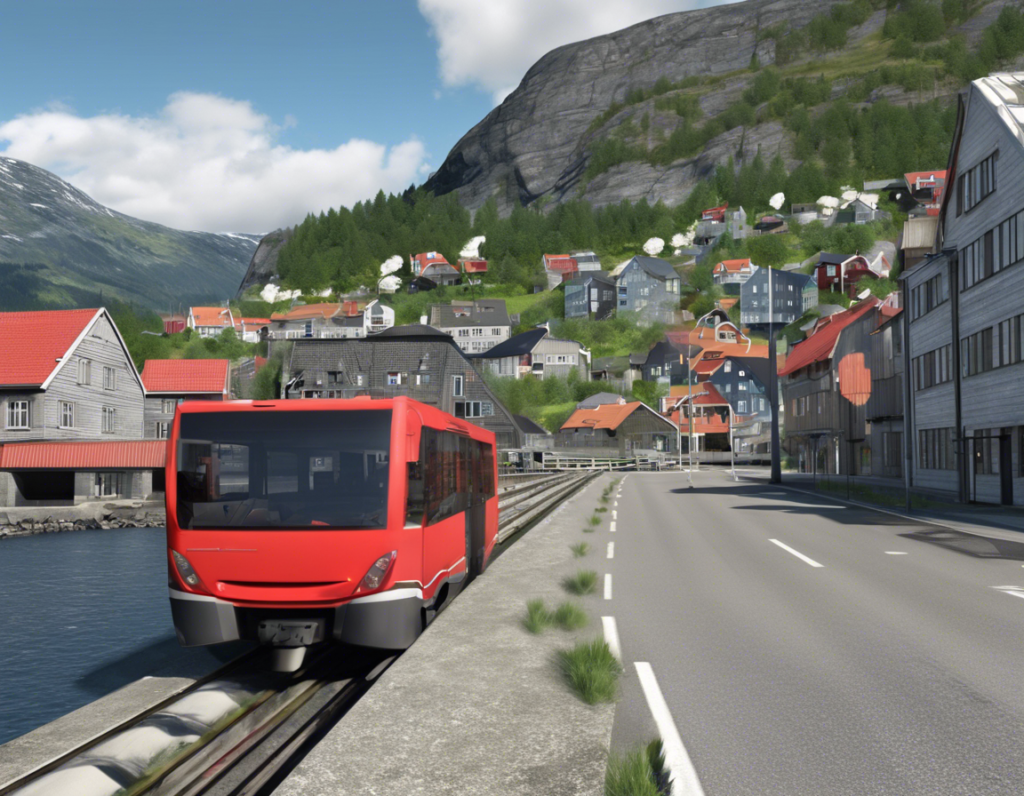
Norway's Wildlife:
Norway is renowned for its stunning natural landscapes, which provide a rich habitat for a diverse array of wildlife. From majestic birds of prey to unique marine life, the country’s wildlife is as captivating as its fjords and mountains. Here’s an exploration of some of the most notable wildlife species and experiences in Norway.
1. White-Tailed Eagle (Haliaeetus albicilla)
The white-tailed eagle, also known as the sea eagle, is Norway’s largest bird of prey and a symbol of the country’s rich avian life. With a wingspan that can reach up to 2.65 meters (8.7 feet), these magnificent birds are primarily found along the coastlines and in the fjords.
Habitat and Behavior: White-tailed eagles prefer habitats near large bodies of water, where they hunt primarily for fish and seabirds. They build large nests in trees or on cliffs and are known for their impressive courtship displays, often locking talons mid-flight.
Conservation Status: Once on the brink of extinction due to hunting and habitat loss, conservation efforts have helped the population rebound significantly. Today, Norway is home to over 2,000 breeding pairs, making it one of the best places in Europe to observe these majestic birds.
Where to See Them: The Lofoten Islands, Bodø, and the Trollfjord are prime locations for sea eagle safaris, where visitors can witness these birds in their natural habitat. Boat tours often provide close encounters, allowing for spectacular photography opportunities.
2. Reindeer
Reindeer, or caribou as they are known in North America, are iconic to Norway’s Arctic regions, particularly in Finnmark. These animals are well-adapted to cold climates and are an integral part of Sámi culture.
Cultural Significance: The Sámi people have herded reindeer for centuries, relying on them for food, clothing, and transportation. Visitors can learn about traditional Sámi practices, including reindeer herding and cuisine, through cultural experiences offered in northern Norway.
Wildlife Viewing: Reindeer can often be seen roaming freely in the wild, especially during the summer months when they graze on the lush tundra. Wildlife tours in areas like Svalbard and Finnmark provide opportunities to observe these animals in their natural environment.
3. Puffins
Puffins are charming seabirds that are often referred to as “clowns of the sea” due to their colorful beaks and comical appearance. Norway is home to several puffin colonies, particularly on islands like Runde and the Lofoten Islands.
Breeding Habits: Puffins nest in burrows on steep cliffs and are known for their impressive diving skills, catching fish underwater. The best time to see puffins in Norway is during the breeding season, from April to August.
Wildlife Tours: Many guided tours offer opportunities to see puffins up close, often combined with visits to other seabird colonies and stunning coastal landscapes.
4. Arctic Fox
The Arctic fox is a small, resilient mammal adapted to the harsh conditions of the Arctic tundra. With its thick fur and ability to camouflage, it thrives in Norway’s northern regions.
Habitat: Arctic foxes are typically found in Svalbard and northern Norway, where they hunt for small mammals, birds, and carrion. They are known for their clever hunting strategies and adaptability to changing environments.
Conservation: While Arctic foxes are not currently endangered, their populations are affected by climate change and habitat loss. Conservation efforts focus on protecting their habitats and maintaining healthy prey populations.
5. Marine Life
Norway’s extensive coastline and rich marine ecosystems support a diverse range of marine life, including whales, seals, and a variety of fish species.
Whale Watching: Norway is one of the best places in the world for whale watching. Species such as orcas, humpback whales, and minke whales can be seen along the coast, particularly in areas like Tromsø and the Lofoten Islands.
Seals: Several species of seals inhabit Norway’s waters, including harbor seals and gray seals. Wildlife tours often include seal watching, providing a chance to see these playful animals in their natural habitat.
6. Conservation Efforts
Norway is committed to preserving its unique wildlife and natural environments. Various national parks and protected areas, such as Jotunheimen National Park and Dovrefjell, play a crucial role in safeguarding habitats for both terrestrial and marine species.
Sustainable Tourism: Many tour operators in Norway focus on sustainable practices, ensuring that wildlife experiences are conducted responsibly and with minimal impact on the environment.
Research and Education: Ongoing research and public education initiatives aim to raise awareness about the importance of wildlife conservation and the need to protect Norway’s natural heritage.
Norway’s wildlife is as diverse as its landscapes, offering countless opportunities for exploration and discovery. From the majestic white-tailed eagle soaring above the fjords to the playful puffins nesting on coastal cliffs, the country’s natural beauty is complemented by its rich biodiversity. Whether you’re a wildlife enthusiast or simply looking to experience the great outdoors, Norway’s wildlife encounters are sure to leave a lasting impression.
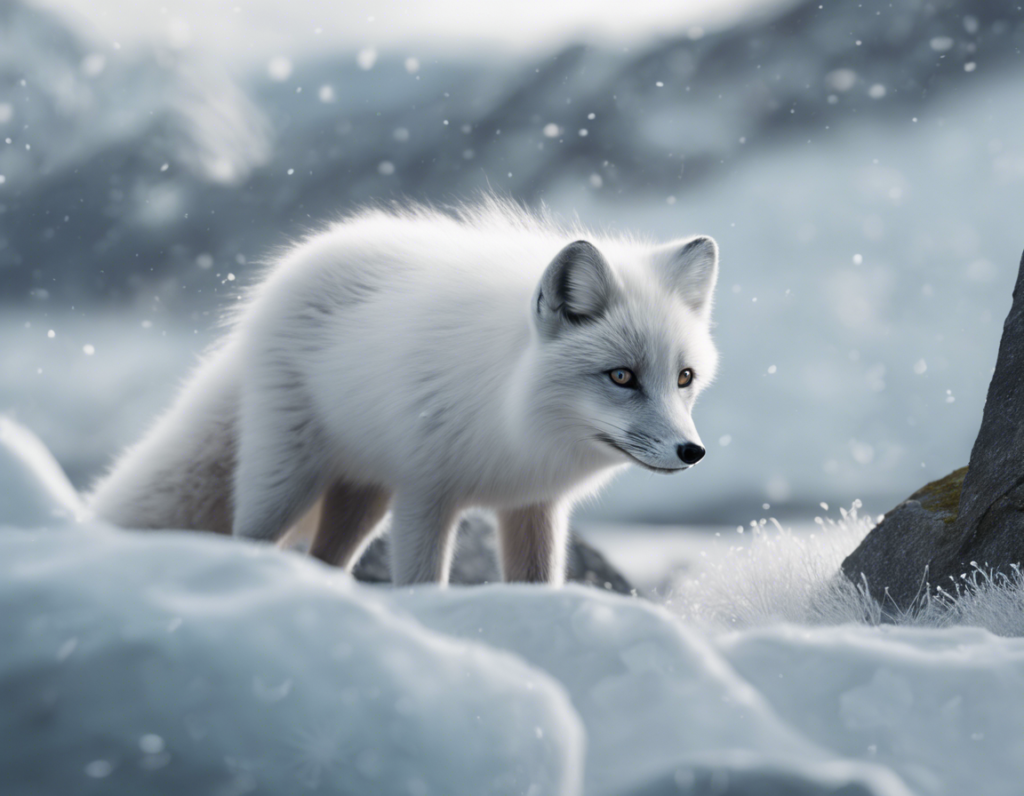
Travel Tips for Norway
Traveling in Norway can be an incredible experience, thanks to its stunning landscapes, rich culture, and efficient transportation system. However, being well-prepared can enhance your trip significantly. Here are some essential travel tips to help you navigate Norway smoothly and enjoyably.
1. Be Flexible with Your Itinerary
Norway’s weather can be unpredictable, especially in coastal areas and mountainous regions. It’s advisable not to have a tightly packed schedule. Allow for flexibility in your plans to accommodate sudden changes in weather, which can affect outdoor activities like hiking and sightseeing. This way, you can adjust your itinerary to make the most of your time in Norway, regardless of the conditions.
2. Embrace Cashless Transactions
Norway is a cashless society, with most transactions conducted via credit or debit cards. Carrying cash is becoming increasingly uncommon, and many places may not accept it at all. It’s a good idea to rely on electronic payments for everything from public transport to dining out. This will simplify your transactions and help you avoid the hassle of exchanging currency.
3. Dress in Layers
Norwegian weather can change rapidly, especially in mountainous areas. Always dress in layers to adapt to varying temperatures and conditions. A good rule of thumb is to wear moisture-wicking base layers, insulating mid-layers, and a waterproof outer layer. This approach will keep you comfortable whether you’re hiking, exploring cities, or enjoying scenic views.
4. Download Local Weather Apps
To stay informed about weather conditions, download Norwegian-specific weather apps like yr.no. These apps provide accurate forecasts and updates, which are crucial for planning your outdoor activities. Checking the weather regularly will help you avoid being caught off guard by sudden changes.
5. Validate Your Public Transport Tickets
Norway’s public transport system operates on a trust basis, meaning you must validate your tickets before boarding. Use apps like Ruter and Entur to purchase and validate your tickets easily. Failing to validate your ticket can result in hefty fines, so make sure to do this before using buses, trams, or trains.
6. Travel Off-Peak
To enjoy a more relaxed travel experience, try to avoid peak travel times, particularly during weekday mornings and afternoons. Traveling during off-peak hours can result in less crowded transport and attractions, making your journey more pleasant.
7. Consider Renting a Car
While public transport is excellent, renting a car can provide you with the freedom to explore remote areas and hidden gems at your own pace. Keep in mind that driving in Norway can be slower than expected due to winding roads and scenic stops. Additionally, be prepared for high fuel prices and tolls when planning your budget.
8. Plan for Seasonal Activities
Norway’s outdoor activities are highly seasonal. For example, hiking trails are best accessed during the summer months, while winter sports like skiing and dog sledding are popular in the colder months. Research the best times for specific activities and plan accordingly to make the most of your visit.
9. Stay Safe and Informed
Norway is one of the safest countries to travel in, but it’s still wise to take basic safety precautions. Always inform someone of your plans if you’re heading into remote areas, carry a mobile phone, and ensure you have proper hiking gear if you plan to explore the outdoors. Familiarize yourself with local emergency numbers and services as well.
10. Enjoy Local Cuisine on a Budget
Dining out in Norway can be expensive, so consider budget-friendly options like grocery stores, food markets, or casual eateries. Sampling local street food or dining at smaller cafes can provide authentic experiences without breaking the bank. Look for lunch specials or early bird menus for better deals at restaurants.
By following these travel tips, you can enhance your experience in Norway and make the most of your journey through this beautiful country. With its breathtaking landscapes, rich culture, and friendly locals, Norway offers an adventure like no other. Embrace the spirit of exploration, and enjoy every moment of your trip!
Conclusion:
In conclusion, cruising the Norwegian Fjords in 2024 is an unforgettable experience that will leave you inspired and awestruck. Whether you’re a couple seeking romance or a family craving adventure, Norway has something to offer everyone, from stunning natural beauty to vibrant cities and rich cultural heritage. So why not start planning your Norwegian adventure today?

